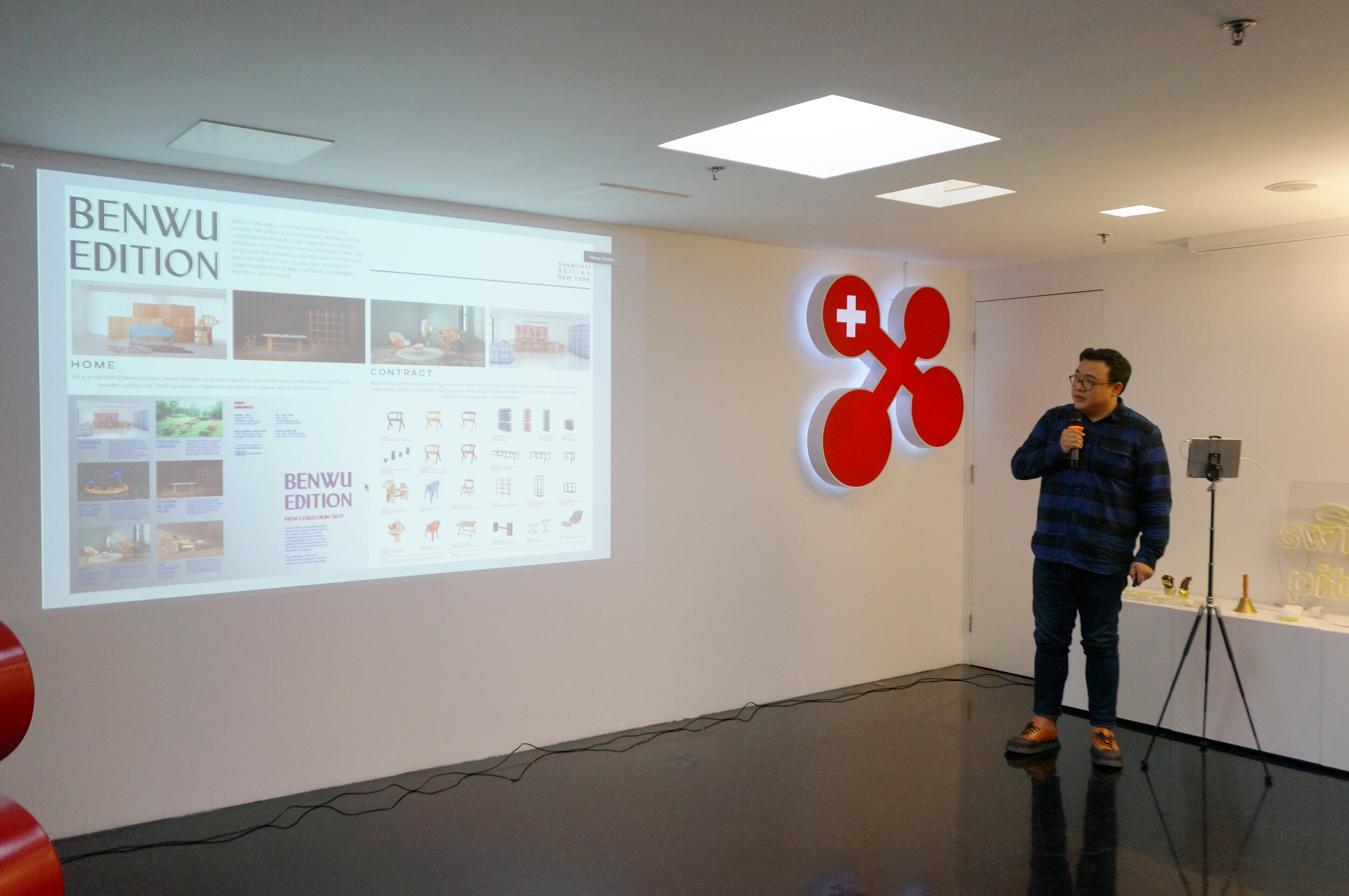By Zhangtong Cheng, Junior Project Manager of Art-Science
For the 24th edition of our monthly Café des Sciences lecture series, we introduced a new format of performing art: Virtual Theatre. It explores new possibilities of future interactions between art and science, and also provides a solution for performing arts under the current COVID-19 situation.
The event started with the joint presentation by Natacha Koutchoumov and Gilles Jobin. Natacha is the Co-director of Comédie de Genève and Gilles is an experienced choreographer specialized in virtual reality in recent years. La Comédie Virtuelle is the new project of Gilles Jobin, an immersive multi-user project based on the digital modelling of the new building of Comédie de Genève.
Natacha began with the introduction of the Comédie de Genève's history and its ongoing relocation plan for the audience to better understand the concept of the project La Comédie Virtuelle. She regarded the project as a new way of creation on stage and a new territory for performing arts.
Then Gilles further elaborated that virtual theatre is a multi-user VR experience that enables the public to visit the Future Comédie de Genève, the new building of the oldest theatre in Geneva, which is to inaugurate its new premises next year. In this virtual theatre, visitors will be able to move through the building's various areas interacting with the space as well as with other participants. Particularly, there is a live dance performance held in the virtual theatre, which makes the nature of this project a performing art.
To realize these functions, Gilles applied VR techniques to dance performance. His team developed their independent remote motion capture system integrated into 3D space. By having the dancers wearing motion capture devices and assigning avatars to the audience, it transcends geographical barriers and gathers performers with the audience in a virtual 3D space. During the performance, dancers can talk with each other for better collaboration and the audiences can stay connected. Interaction is a key element as emphasized by Gilles. He believed that with real-time VR performances, virtual theatre can provide people with a real sense of interaction just like traditional theatres. More practically, he wished that virtual theatre could enable people to stay connected when going through the lockdown period and maintain connection with the society. In Gilles's opinion, virtual performance will not replace real performance but it opens up a new creative path of theatre performance.
The inspiring presentation triggered an enthusiastic discussion. In the panel discussion session, three professionals in the performing arts field contributed with their reflections.
Erik Kuong, Managing & Creative Director of Creative Links Ltd was optimistic about the future of virtual theatre. Based on his immersive theatre experience, he thought that virtual theatre will open up a new way for the audience to participate in theatre activities. He was still exploring how digital creations can combine with the real world to offer the audiences chances for deeper involvement in an immersive theatre.
As the pioneer in this field, Gilles was rather open to these uncertainties. He admitted the limitations of virtual theatre such as difficulties in providing technical support to the audience or holding the audience's attention during the performances. But he also enjoyed finding new problems and striving to solve them.
Returning to China’s performing arts scene, Ophelia Huang, Director of International Projects in Shanghai Dramatic Arts Center, shared her experiments of transforming drama performance online via video platform Bilibili during the period of lockdown in Shanghai.
Finally, Yuan Zhang, the Curator of Performance Project at Shanghai Ming Contemporary Art Museum led the discussion to a more extensive level by touching the essence of performing arts. He raised the question of how dance connects us and how it could be evolved. He pointed out that dance is abstract since there is no language communication involved. Unlike movies or drama, dance is without narrations. The “silence” of dance makes it a good experimental subject for new technologies which would have an increasing impact on performing arts in the future. Besides, he also examined the relationship between virtual theatre and VR game. They both adopt digital technology as a tool and follow rules given by algorithms. However, the ways they connect with people are different. In VR game, people play by the rules of the game. While in virtual theatre, people try to feel an emotional connection with other people. Yuan Zhang emphasized that virtual theatre would become a new reality for arts.
As posed by our audience Ruth Gibson, we will be wondering how technologies are to transform the art form itself. The future will be of adventures and surprises, and we wish to explore it with you in the next years’ Café des Sciences lectures!
Please find the link to the video recording of the webinar here.

































